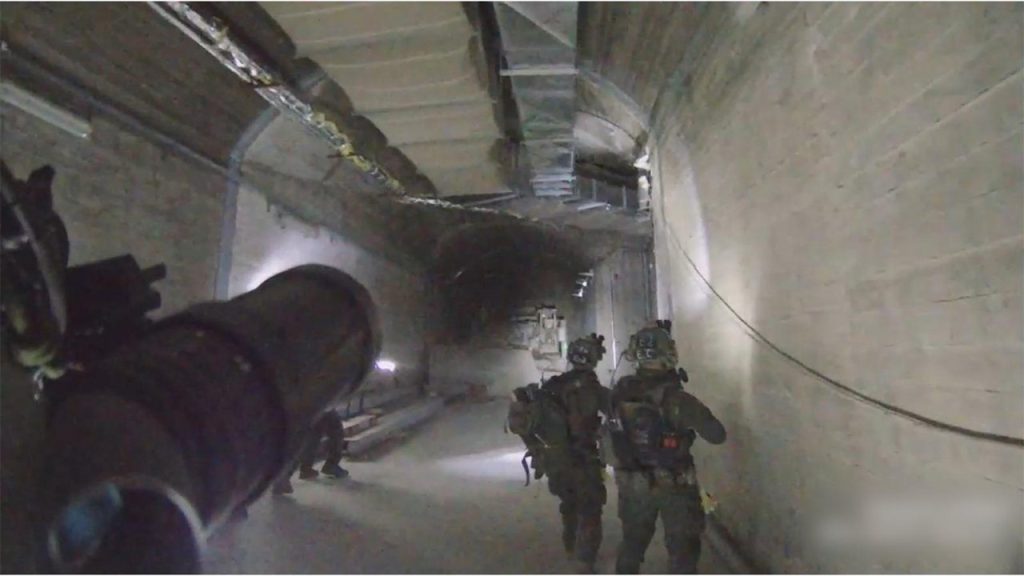In September 2024, Israeli elite forces executed a complex and high-stakes special operation within Syrian territory, targeting a clandestine underground missile factory. This operation, revealed by the Israel Defense Forces (IDF) in September 2025, involved over 100 soldiers from the elite Shaldag air force unit, supported by dozens of aircraft, including helicopters. The mission aimed to dismantle an Iranian-funded facility capable of producing hundreds of precision-guided missiles annually, intended for Hezbollah’s arsenal and use against Israel. The factory, nestled into a mountainside, was successfully destroyed, along with manufacturing equipment, ensuring the disruption of missile production. The IDF released footage of the raid and the subsequent detonation of the underground complex, showcasing the scale and precision of the operation. The raid resulted in the deaths of approximately 30 Syrian soldiers.
The targeted factory, completed in 2021 after construction began in 2017, was a significant element in Iran’s regional strategy to arm Hezbollah. The operation underscored the deep connection between Iran and its proxies in the region, with the machinery and components within the factory originating from Iran. The facility, designed to produce between 150 and 350 missiles per year, including precision-guided missiles, posed a direct threat to Israeli security. The IDF emphasized that the complex terrain and subterranean location of the factory necessitated a ground operation by special forces, precluding an airstrike. The discovery of information related to Syria’s chemical weapons program further highlighted the potential danger posed by the facility.
The raid yielded a trove of intelligence, including notebooks, documents, and a chemical handbook detailing missile production. This discovery confirmed the factory’s role in advanced weapons production and raised concerns about Syria’s continued involvement with chemical weapons, despite international condemnation of their use by the Assad regime during the Syrian civil war. The IDF’s access to these materials provided valuable insights into the factory’s operations and the nature of the weapons being produced. The information reinforces the link between Iran, Syria, and Hezbollah in the development and deployment of advanced weaponry in the region.
The context for this daring raid is the escalating security situation following the devastating Hamas attack on Israel in October 2023. This cross-border assault, resulting in the loss of over 1,200 lives, including 40 Americans, highlighted the multifaceted threats Israel faces from Iran and its proxies. The attack marked a turning point in Israel’s security calculus, demonstrating that Iran’s support for groups like Hamas and Hezbollah posed an existential threat, not merely a nuisance. The IDF’s operation in Syria is seen as a preemptive measure to disrupt the Iranian axis and its efforts to arm Hezbollah, preventing further attacks on Israel.
This operation represents a significant shift in Israeli strategy, moving from containment to active disruption of Iran’s network. The scale and complexity of the raid, deep within Syrian territory, signal Israel’s resolve to counteract Iranian influence and protect its national security. Amit Segal, a leading Israeli political analyst, described the operation as part of a broader strategic shift. Previously, Israel focused on containing Iran’s proxies while primarily addressing the nuclear threat in Tehran. However, the October 2023 Hamas attack shattered this perception, forcing Israel to confront the immediate and existential threat posed by Iran’s conventional arms network.
Prime Minister Netanyahu praised the operation as one of the most crucial preventative measures taken against the Iranian axis’s armament efforts. The raid reflects a more assertive posture against Iranian influence in the region, suggesting a potential shift towards confronting Iran’s nuclear ambitions directly. Segal suggests that Israel is now at a “historic crossroads,” potentially poised to directly address the Iranian nuclear threat. This operation, alongside the ongoing conflict with Hamas and Hezbollah, places Israel in a complex and volatile security environment, with implications for the broader Middle East. The destruction of the Syrian missile factory signifies a decisive step in disrupting the flow of advanced weapons to Hezbollah, but the underlying tensions and threat of escalation remain.

